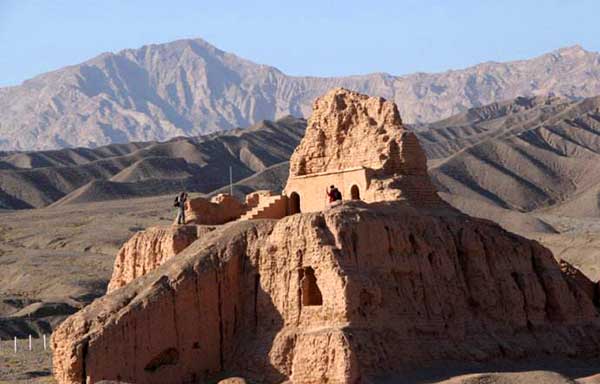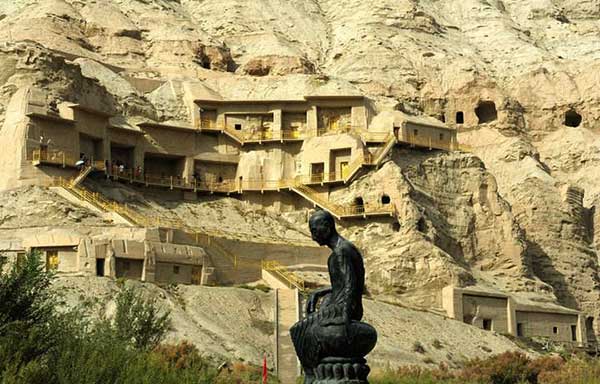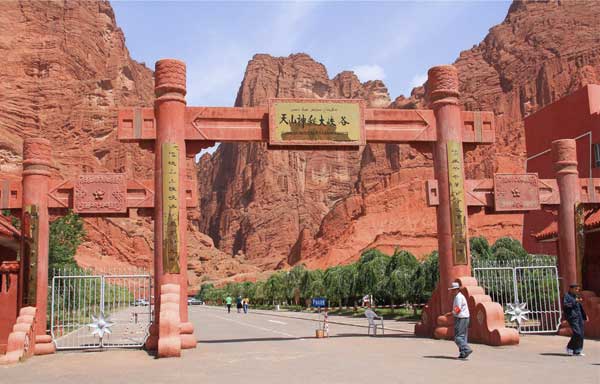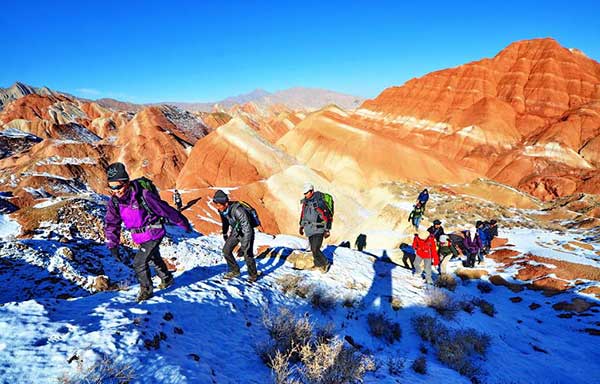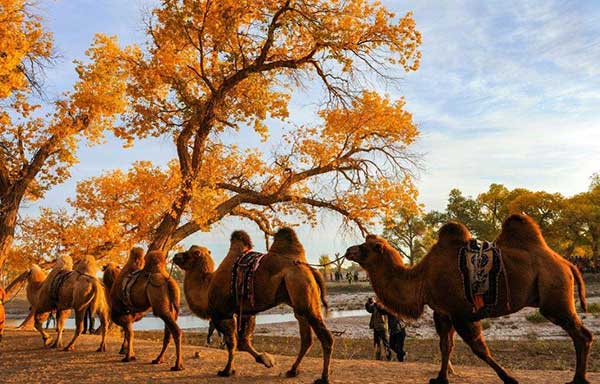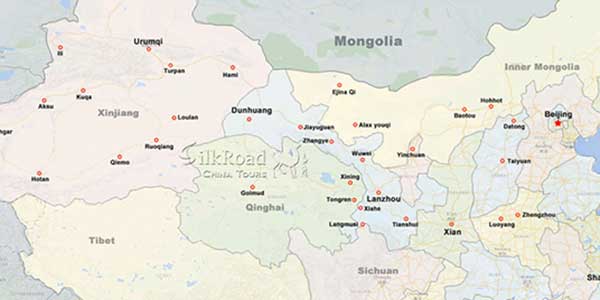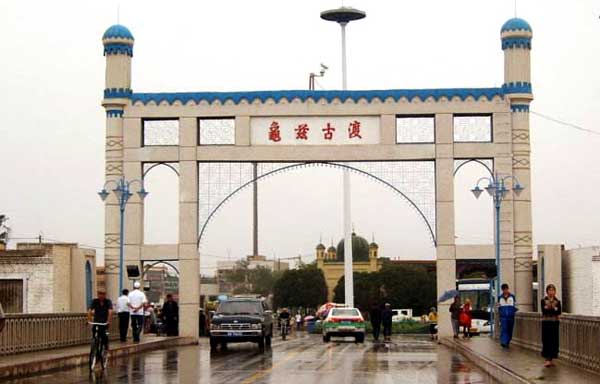 Kuqa County is located at the southern foot of the central Tianshan Mountains and the northern edge of the Tarim Basin. It is adjacent to Luntai County to the east and Taklamakan Desert to the south, is the eastern end of Aksu region. The county is 193 kilometers long from north to south, and 164 km from east to west, with an area of 15,200 square kilometers. Its 755 kilometers from Urumqi, the capital of the autonomous region.
Kuqa County is located at the southern foot of the central Tianshan Mountains and the northern edge of the Tarim Basin. It is adjacent to Luntai County to the east and Taklamakan Desert to the south, is the eastern end of Aksu region. The county is 193 kilometers long from north to south, and 164 km from east to west, with an area of 15,200 square kilometers. Its 755 kilometers from Urumqi, the capital of the autonomous region.
Topography
The surface of Kuqa County slopes down from northwest to southeast, with the highest elevation around 4550 meters, lowest 922 meters. Can be divided into the northern Tianshan mountain area, alluvial fan-shaped gravel Gobi area and southern alluvial plain area.
Climate
Kuqa County is located in the warm temperate zone, it has a dry air with hot summer and cold winter, annual temperature difference and daily temperature difference are large. Due to the complex nature of the land, there are obvious regional climate differences.
History
Kuqa is known as “Kizil", with a long history and splendid culture. Kuqa was the largest of the 'Thirty-six kingdoms of the Western Regions', with a population of 81,317, including 21,076 persons able to bear arms.Historically, it has been a bridge between China and the Eurasian continent. The Chinese and western cultures have been integrated here and have become the birthplace of Kizil culture. The ancient Kuqa is not only the political, economic and Buddhist center of the Western Regions, but also an outstanding representative of music and dance in the Western Regions. As early as the Han and Tang Dynasties, Kuqa was hailed by the West as the "Western Music Capital"
Kuqa was an important Buddhist center from Antiquity until the late Middle Ages. Buddhism was introduced to Kuqa before the end of the 1st century, however it was not until the 4th century that the kingdom became a major center of Buddhism, primarily the Sarvastivada, but eventually also Mahayana Buddhism during the Uighur period. In this respect it differed from Khotan, a Mahayana-dominated kingdom on the southern side of the desert.
According to the Book of Jin, during the third century there were nearly one thousand Buddhist stupas and temples in Kuqa. At this time, Kuqanese monks began to travel to China. The fourth century saw yet further growth for Buddhism within the kingdom. The palace was said to resemble a Buddhist monastery, displaying carved stone Buddhas, and monasteries around the city were numerous.
Now Kuqa has become an important petrochemical base in Xinjiang, a coal, electricity base, tourism base and a central city in the southern part of southern Xinjiang, and has entered the ranks of national-level high-quality cotton base counties, Xinjiang's food base and livestock husbandry base counties.
Weather

Attractions in Kuqa
Related Tours
General Information
Alias: Kucha
Area: 15,200 sq km
Location: Xinjiang
Airport: 2.1 km from city
Train Station: 7 km from city
Population: 470,000
Relevant blogs
-
How did the name of Tianshui in Gansu come about?
The name Tianshui is very pleasant to the ear, and it reminds one of that exquisitely beautiful verse, "After getting drunk, one doesn't know if the sky is in
-
The 8th Silk Road Hotel Festival was successfully
On December 27th, the "8th Silk Road Hotel Festival" grandly opened at the Yujing International Hotel in Zhangye. This hotel festival gathered industry experts,
-
The Karez Irrigation System in Turpan has been sel
On September 3rd, at the 75th Executive Council Meeting of the International Commission on Irrigation and Drainage held in Sydney, Australia, the 2024 (11th bat
-
What is the connection between "dragons" and "s
In traditional Chinese culture, the snake has a dual identity of auspiciousness and danger. Ancient people believed that the snake not only possesses divine cha
-
Endangered Przewalski's Horses Spotted at Dunhuan
<p>In early February, a group of special "visitors"—the Przewalski's horses—appeared at the Dunhuang Yumen Pass scenic area in Gansu Province, a U
-
The Fourth Dunhuang Cultural Tourism Supplier Conf
On the morning of February 18th, the Fourth Dunhuang Cultural Tourism Supplier Conference in Northwest China commenced at the Dunhuang International Convention

